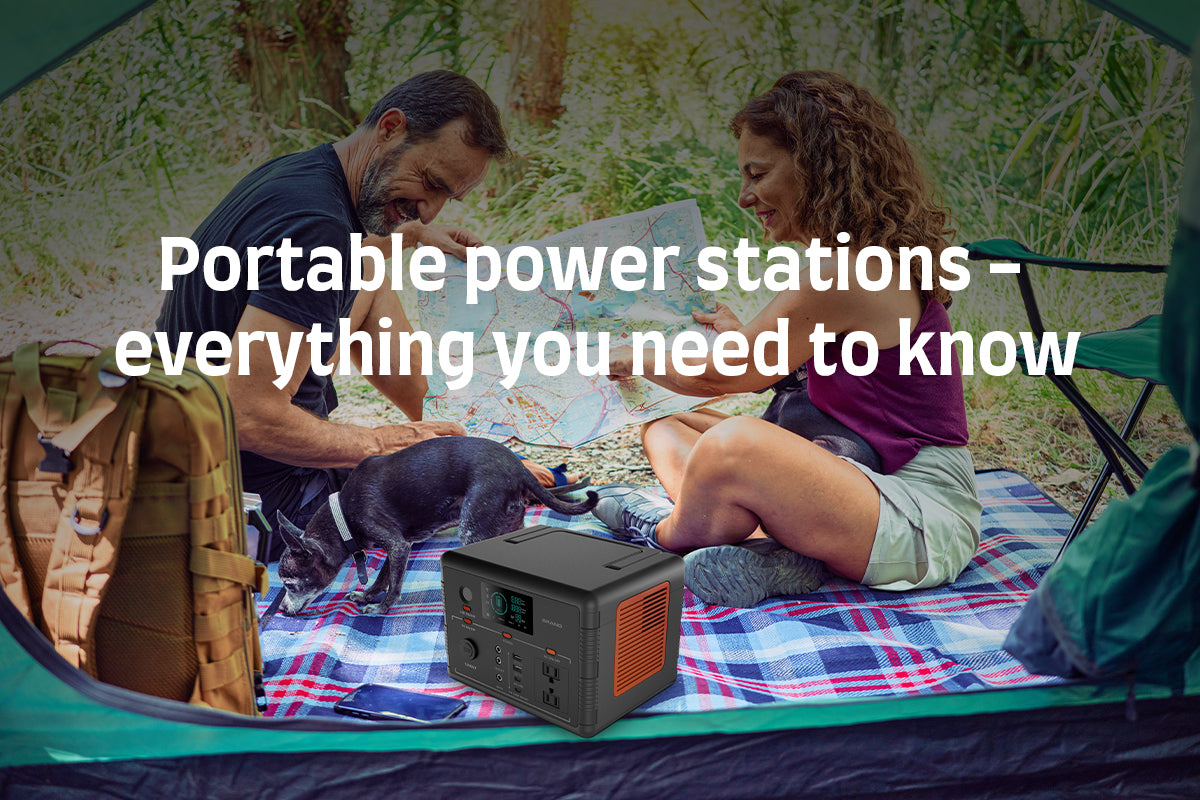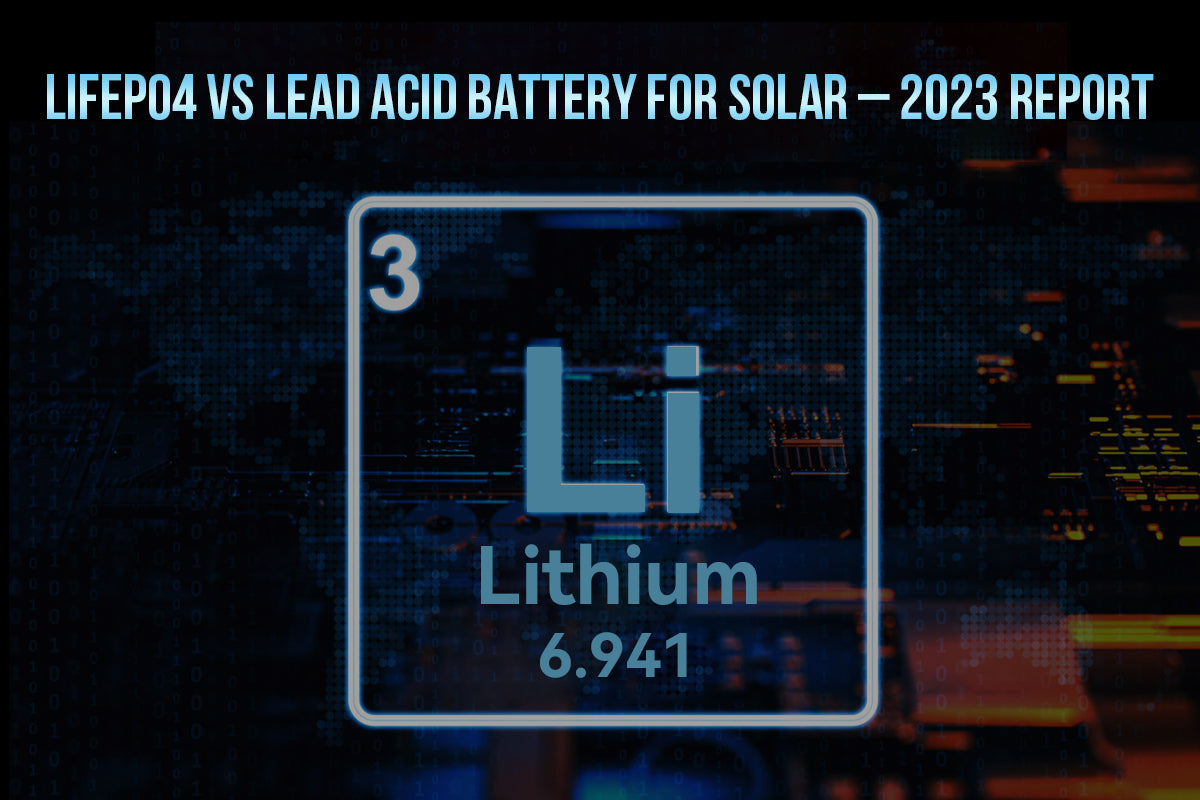If you've come this far, you're probably wondering what a portable charging station is. You probably have some doubts about how they work and their characteristics that may affect your decision. Then what we explain here is of interest to you.
What is portable powewr station?
Portable power station is also called solar generator, because it allows you to generate and store electrical energy in a compact and mobile unit, so that you can use it to power your electronic devices and appliances while on the go. It typically consists of a rechargeable battery, an inverter to convert the DC power from the battery into AC power for your devices, and various input/output ports for charging and discharging.
Portable power stations come in various sizes and capacities, ranging from small units that can fit in a backpack and power a smartphone or tablet, to larger units that can power a refrigerator or power tools at a job site. They can be recharged via a wall outlet, a car cigarette lighter port, or a solar panel.
Portable power stations are becoming increasingly popular for camping, outdoor activities, emergency preparedness, and other situations where a reliable source of electricity is needed but access to traditional power sources is limited or unavailable. They offer a convenient and environmentally friendly alternative to gas-powered generators, and are often much quieter and easier to transport.
How does a portable power station work
A portable power station works by converting stored energy from its internal battery into electrical power that can be used to run various electronic devices and appliances. The battery can be charged via a wall outlet, car charger, or solar panel, depending on the model. Once the battery is fully charged, the power station can be unplugged and used as a mobile source of electricity.
Charging
The portable power station can be charged using a variety of methods, including:
-
Wall charger
You can charge the power station using a standard wall charger by plugging it into an electrical outlet. -
Solar panel
The power station can also be charged using a solar panel, which harnesses the power of the sun to recharge the battery. -
Car charger
If you're on the go, you can use a car charger to charge the power station while you're driving. -
USB port
Some portable power stations can be charged using a USB port, which makes it easy to charge them using a computer or other USB-enabled device. -
Generator
If you have access to a generator, you can use it to charge the power station quickly and efficiently.
Discharging
A portable power station is a device that can store and supply electrical power for various applications, such as charging electronic devices or powering small appliances. The following are some possible explanations for how a portable power station can discharge its stored energy:
- Output ports
- Inverter
- Battery management system
- Display screen

What size of portable power station do I need
Power stations are usually classified based on their size, which is measured in watts (W). Watts are used to measure power and determine the rate of energy transfer. A power station with higher watts can provide more power in a single charge.
When selecting a solar generator, there are two important sub-measures of watts to consider: continuous power and peak power.
Continuous Power
Continuous power/rated power refers to the amount of power that a power station can consistently provide.
Here are some common rated power outputs for portable power stations and their corresponding usage scenarios:
-
Output ports
A portable power station may have one or more output ports, which are usually equipped with different types of connectors, such as USB, AC, or DC. By plugging in the appropriate cable, users can draw power from the power station and use it to operate their devices.
-
100W - 200W
These portable power stations are suitable for powering small electronic devices, such as smartphones, tablets, laptops, and small LED lights. They are often used for camping trips, outdoor picnics, or short-term power outages .
-
300W - 500W
These power stations are capable of powering medium-sized devices, such as mini-fridges, small televisions, CPAP machines, and small power tools. They are often used for longer camping trips, outdoor events, or as a backup power source during power outages.

-
600W - 1000W
These power stations are suitable for powering larger devices, such as full-sized refrigerators, large televisions, and power tools. They are often used for RV trips, outdoor events, or as a backup power source for households during power outages.
-
1000W or higher
These power stations are designed to power multiple high-wattage devices simultaneously, such as air conditioners, electric vehicles, and construction equipment. They are often used for construction sites, disaster relief, or as a backup power source for commercial facilities.
Note:
1. The exact usage scenarios may vary depending on the specific model and features of the portable power station.
2. The necessary capacity of your power station solely relies on its intended purpose. You'll have to do some calculations and inspect your household appliances and devices to figure out your requirements. The size of the power station should then be determined accordingly.
Peak Power
On the other hand, peak power is the maximum amount of power that a power station can provide in a short burst, such as when turning on an appliance.
Most appliances require a burst of energy that is greater than the energy needed to run normally. For example, a refrigerator requires a burst of 3-7 times its normal power consumption to turn on.
Other things to consider when buying a portable charging station
When considering purchasing a portable power station, there are several factors to take into account from the perspective of capacity, output, design, voltage and current ratings,battery type and recharge time, and resistance:
Capacity
The amount of power a portable power station can supply depends on its capacity, which is measured in watt-hours (Wh) or amp-hours (Ah). Higher capacity power stations can supply more power and run larger devices for longer periods of time.
Consider the amount of power you will need and for how long . You may want to consider a larger capacity portable power station if you plan on using it for extended periods of time or powering multiple devices.
Output
The number of ports available on the portable power station will determine how many devices you can charge at once.
You'll want to make sure that the portable power station has both AC and DC outputs. AC outputs are necessary for powering larger devices like laptops, while DC outputs are useful for charging smaller devices like phones and tablets.

Voltage and Current ratings
The voltage and current ratings of the AC and DC outputs will determine what types of devices you can power and how quickly you can charge them.
Battery type and Recharge time
The type of battery used in the portable power station will determine its weight, size, and overall performance. Lithium-ion batteries are typically preferred due to their high energy density and long lifespan.
The recharge time of the portable power station will determine how quickly you can get it back up and running after it has been depleted.
Resistance
The resistance of the portable power station is also important. Look for a power station with a high resistance to environmental factors such as temperature, moisture, and impact . Additionally, consider the power station's resistance to power surges and fluctuations, as these can damage your devices if not properly protected against.
Design
The design of the portable power station should also be taken into account. Consider the weight and size of the power station, as well as the type and number of output ports available. Some power stations have more ports than others, and some may have specific ports for certain devices. Additionally, consider the durability and portability of the design, particularly if you plan to use the power station while traveling.




Leave a comment
This site is protected by reCAPTCHA and the Google Privacy Policy and Terms of Service apply.